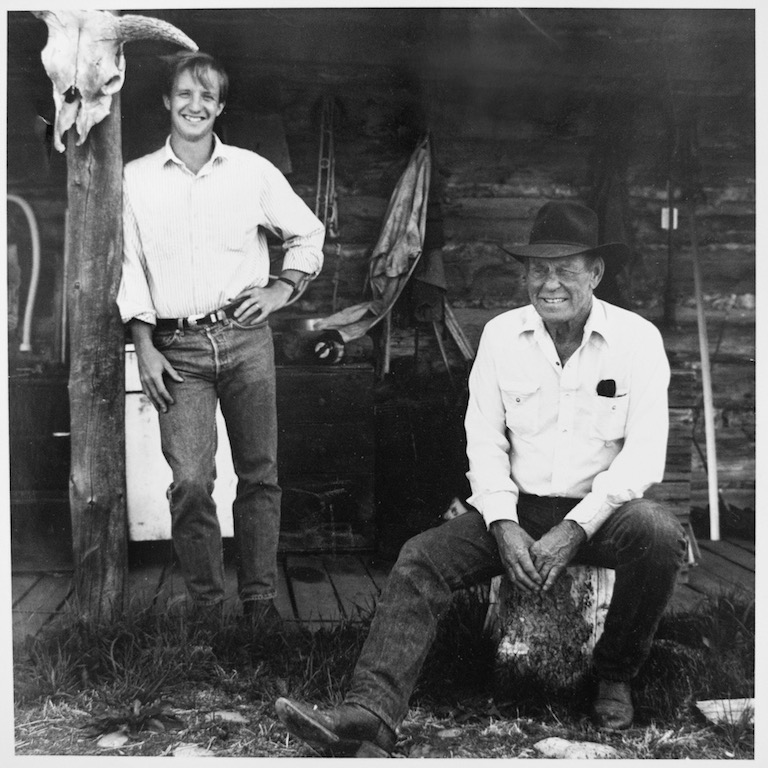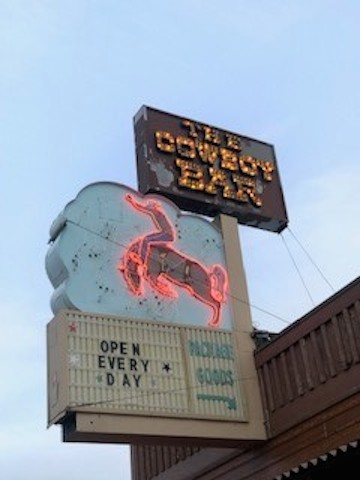
BY JUDY CARMACK BROSS
Chicagoan Grove Mower brings us hope.
Awaiting sequels from our favorite authors has powered up in the pandemic, and Mower’s Forty Rod Road conclusion titled Hope expands on favorite characters and sets our hero Hank Chandler back not only at the Lazy T Ranch in Wyoming where the story began but also in Lake Forest and New York. Cowboys, Manhattan nightclubs, a Lake Forest country club, and time with the Lazy T’s magnificent matriarch, Hope Stifel, make for a lively literary cross-country road trip.

Hope.
Like his first novel, Hope is filled with characters you can’t help rooting for and villains who meet their match in Hank and his girlfriend, Stevie Pignatelli. All the while Mower makes sure that you can’t get that 1980s music the characters discuss out of your head.
The saga begins ten years after Hank first traveled to Wyoming as a college student trying to straighten out his life and discover the truth about a friend’s death. In the sequel, Hope herself is dying, and Hank seeks the closure that only a visit back down Forty Rod Road would bring. Along the way, his old girl friend meets his new one.
For those who are choosing creative writing as a way to survive the pandemic, we couldn’t think of a better person to ask for writing tips. We tracked Mower down to the Santa Fe casita where he was sheltering in to work on a screenplay for Forty Rod Road, the tale of a summer cowboy who ends up killing two men. The book emerged from journals that Mower kept for many years.

Forty Rod Road.

Grove Mower.
Born in St. Louis and a Deerfield Academy and Brown University graduate, Mower not only punched cattle in Wyoming but also worked on an oilrig in Midland, Texas, before his career on Wall Street. He moved to Chicago from New York in 1988 and married award-winning photographer Brooke Hummer.
“Forty Rod Road was a rocky and deserted patch with just two ranches on it when I first saw it—lots of scrubland and the ranch itself, spreading 880 acres, had bleakness of Mars. It becomes a metaphor for Hank’s despair at the time, but in the novel, love, redemption, and revenge accompany him on his journey down the road,” Mower explains.

The real Forty Rod Road.

A young Mower and cowboy Harve Stone in Wyoming.

The Cowboy Bar in Pinedale.
We asked Mower to tell us about his New York in the 1980s, captured terrifically in Hope: “Wall Street was running as was the economy after a long downturn. Yuppies, yuppies, yuppies. Everyone was employed and making more money than they thought possible. It was a freewheeling time. Nightclubs, bars and restaurants, houses in the Hamptons or the Jersey Shore. There was not much to worry about. It was a party and little arrogant.”
He continues, “For Hank, he enjoys the money and independence, but is put off by it all. He feels there is more than this and does not want to settle for mere Wall Street lucre and comfort. He does not want to piss away his life following the dream of the suburbs and a place in the Hamptons. He wants to rebel, be one step removed, like he’s too cool. He’s in wannabe hell: he wants Wall Street money, but he wants not to be tied to it. He feels entitled by it all but wants to prove more of his worth by exploring life. That is what he found in Wyoming at 19 with Hope and why he wants to return.”
And Hope was just the kind of person to build a sequel around. “Hope is of the earth, of mountains, water, air, and the animals of Wyoming. She is solid, trustworthy, and wise: a calming force that sees ahead. She is hope. No bullshit here. She reads books and people. She is poor relative to the community, but has a wealth of respect because of her integrity and character,” he says. “She knows Hank and his story before he arrives at her doorstep. He is a twisted up kid needing the hard work of a ranch to straighten his life. They immediately develop a kindred spirit, and Hank implicitly trusts Hope’s judgment, as she is responsible for having Hank kill two men. Their relationship is mystical and ties into Hope being of the earth and Hank trusting his intuition about her. Hope is hope in many ways, none mushy.”
Seeing writing a novel as a great way to avoid cleaning a closet, I asked Mower for some advice: “Choose characters that you like or loathe, make them believable. Think about how they talk and their little tics and mannerisms,” he advises. “First of all, you have to have talent and then the determination to stick to it. Try choosing five writers whom you really identify with and once you have studied their style, develop your own. For me, I read and reread P.G. Wodehouse, who really makes a book flow, and Elmo Leonard. I heard that Leonard listens to jazz—that comes out in his writing. I had a Eureka moment when I felt that. Cadence is what you want.”
Mower similarly makes music move the scenes. “For the more elegant New York events there’s Cole Porter or Frank Sinatra singing Jerome Kern’s ‘The Way You Look Tonight.’ The popular 1980s music takes the characters across country through Lake Forest and on to Wyoming,” he says.

With his new puppy, Vino.
The author, also a managing partner at Hummer Mower, makes time for his writing early in the morning—between 6:30 and 8:30 am—before his day job begins. In the evening he reads over what he wrote that morning. Pre-pandemic, the bus ride to work provided more time to see if he got that day’s effort right. He advises everyone to read aloud what you have written. He often records his chapters and plays them back to himself.
He says, “Your novel has to be edited over and over, and I also sometimes ask friends to read my work. Hiring an editor is essential. A good editor is like a good golf pro. I once had an editor who took out two full chapters, and poked lots of holes in my work. I practically wept but came to agree with him.”
Mower also advises novice writers to use short chapters: “Make it quick.” He often finds himself at cocktail parties listening for interesting words he might use in dialogue.
While a student at Deerfield, Mower visited Lake Forest often. The scenes set there are some of the best in the book, including a dinner with Hank’s girlfriend, Stevie, whom he brings home unannounced then introduces to a dotty grandmother at a beloved country club. “I use a lot of those old visuals and combine real people. So much is drawn from life,” he reveals.
While Forty Rod Road was a coming of age book, Hope wraps up the story. Mower says he doesn’t know what’s next for Hank. “He gave me a story to tell,” he says. “His journey might be complete.”
Mower describes writing a story to putting together a puzzle. And as you go, the characters connect your heart and your head: “I love working to get their cadence, and I can’t wait to be with my characters as I write.”
His fans predict that there are many other journeys ahead for whatever characters call to him next, who will surely speak to us just as do the people who populate Hope.
Photo credit: Brooke Hummer Mower







